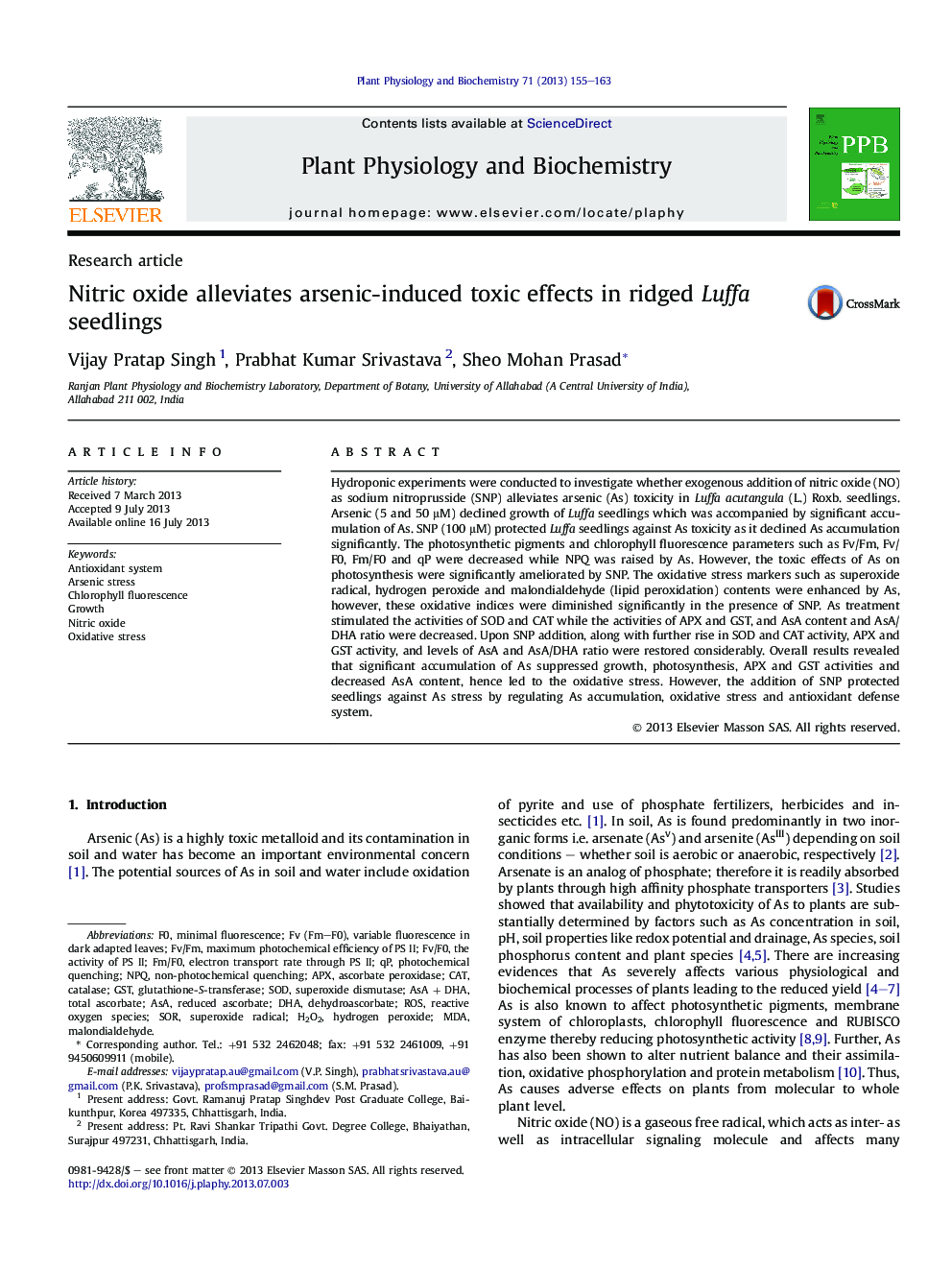| Article ID | Journal | Published Year | Pages | File Type |
|---|---|---|---|---|
| 2016306 | Plant Physiology and Biochemistry | 2013 | 9 Pages |
•Arsenic declined photosynthesis and thus the growth of Luffa seedlings.•This was due to enhanced As uptake and oxidative stress, and declined antioxidants.•However, NO protected Luffa against As toxicity.•This was due to declined As uptake and oxidative stress, and improved antioxidants.
Hydroponic experiments were conducted to investigate whether exogenous addition of nitric oxide (NO) as sodium nitroprusside (SNP) alleviates arsenic (As) toxicity in Luffa acutangula (L.) Roxb. seedlings. Arsenic (5 and 50 μM) declined growth of Luffa seedlings which was accompanied by significant accumulation of As. SNP (100 μM) protected Luffa seedlings against As toxicity as it declined As accumulation significantly. The photosynthetic pigments and chlorophyll fluorescence parameters such as Fv/Fm, Fv/F0, Fm/F0 and qP were decreased while NPQ was raised by As. However, the toxic effects of As on photosynthesis were significantly ameliorated by SNP. The oxidative stress markers such as superoxide radical, hydrogen peroxide and malondialdehyde (lipid peroxidation) contents were enhanced by As, however, these oxidative indices were diminished significantly in the presence of SNP. As treatment stimulated the activities of SOD and CAT while the activities of APX and GST, and AsA content and AsA/DHA ratio were decreased. Upon SNP addition, along with further rise in SOD and CAT activity, APX and GST activity, and levels of AsA and AsA/DHA ratio were restored considerably. Overall results revealed that significant accumulation of As suppressed growth, photosynthesis, APX and GST activities and decreased AsA content, hence led to the oxidative stress. However, the addition of SNP protected seedlings against As stress by regulating As accumulation, oxidative stress and antioxidant defense system.
